Careers at CDC
CDC Dentists
Public health dentistry is one of nine formally recognized specialty areas of dentistry in the United States. Yet out of a profession that employs 160,000, approximately 600 choose to serve in a public health capacity. CDC employs fewer than 20 dentists, with only half serving in CDC’s Division of Oral Health, NCCDPHP, notes Bill Maas, DDS, MPH, who has served as director of the multidisciplinary division since 1998.
"Many dentists came into CDC for EIS training and stayed. Today, they work in the HIV program, in viral hepatitis and in tobacco and infection control," Maas says. "Their contributions are broader than many would imagine, considering the relatively narrow interest of one’s personal dentist."
Here, CDC Connects features several of the agency′s dentists as part of a continuing series highlighting various jobs and the people who work in them.
Bruce Dye, DDS, MPH, (CAPT USPHS), Dental Epidemiology Officer, NCHS, Hyattsville, MD.
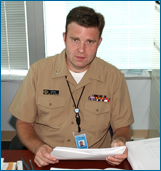
Bruce Dye says his 17-year career as a dental officer in the Public Health Service prepared him for his current job as the agency′s key oral health expert for the National Health and Nutrition Examination Survey (NHANES). From his office in Hyattsville, Md., he serves as both the oral health trainer and the reference examiner for NHANES.
"Past experiences as an Indian Health Service dental clinic chief in Michigan, to serving as a research fellow and finally, to being a practicing oral epidemiologist, all have cumulatively provided me with the training and experience necessary to understand the importance behind why we collect oral health data, how we collect and use oral health data, and why oral health matters," says Dye, who finds one of the most interesting aspects of his work exploring hypotheses such as the relationship between periodontal disease and biomarkers with systemic health."Oral Health matters because it is integral to experiencing a healthy life. The association between some dental diseases and adverse health outcomes places a renewed importance on understanding trends in dental disease distribution and how these trends may impact the overall health of the nation," says Dye, who hopes one day to do international dental public health research and practice.
Scott Presson, DDS, MPH, (CAPT USPHS), Program Services Team Leader, Division of Oral Health, NCCDPHP
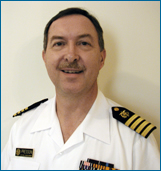
Scott Presson believes tooth decay remains too common in both children and adults.
"Tooth decay, tooth loss, periodontal disease, and oral cancer could all be substantially reduced if preventive efforts were more widely utilized," Presson says, adding that prevention and public health efforts are under-resourced compared to treatment programs. A desire to have a larger health impact prompted Presson to leave clinical practice within the Indian Health Service and to join CDC in 1998."CDC is the epicenter of public health practice; I wanted to be part of national efforts to prevent oral diseases," he says. As the Program Services team leader, Presson directs a team in national efforts to expand dental prevention, mainly through community water fluoridation and dental sealant programs. He also directs a Dental Public Health Residency Program to train dentists in dental public health.
"The Division has done cutting-edge work in developing the National Oral Health Surveillance System and in supporting state oral health programs with tools and resources," says Presson.
Rosemary Duffy, DDS, MPH, (CAPT USPHS), Chronic Disease Epidemiologist, State assignee—Ohio, NCCDPHP
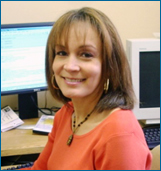
"Many problems related to oral health are chronic as well as infectious conditions, so my training in dentistry was a help, not a detriment, to studying chronic diseases," notes Rosemary Duffy, a chronic disease epidemiologist and a nine-year CDC veteran.
She joined the USPHS Commissioned Corps in 1990, working in HRSA’s Bureau of Health Professions. Seeking more applied epidemiology work, she joined CDC′s EIS program in 1997 and worked in what was then the Hospital Infections Program in the National Center for Infectious Disease.Duffy currently works for the State of Ohio supporting state chronic disease programs, including helping the health department use health population-based data to set priorities and develop sound publicity policy, while helping strengthen the state’s chronic disease epidemiology capacity.
"I want to continue to work in Ohio in chronic diseases. I want to continue to try to make a difference in the public′s health. Being a dental officer in the USPHS Commissioned Corps has allotted me that opportunity."
Christine Rosheim, DDS, MPH, Health Education Specialist, Office of Workforce and Career Development
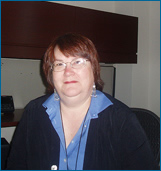
Christine Rosheim believes dentists can serve in many areas of public health—not just oral health-related fields.
"We have strong backgrounds in science and health, a service orientation, and good decision-making and organizational abilities," says Rosheim, whose career exemplifies the broad scope of work a public health dentist can do. Rosheim worked five years for the Indian Health Service on an Indian reservation in northern Minnesota. While in MPH graduate school at the University of Minnesota, she wrote her thesis on chewing tobacco use by Native American school children and did a summer internship at ATSDR."It was then that I got interested in environmental contamination on tribal lands. After I graduated, I came back to ATSDR to work in the Division of Health Education."
Later, Rosheim worked in bioterrorism/emergency preparedness outreach and education for healthcare providers. Today, she supports the Strategic Workforce Activity at OWCD on issues such as succession planning and diversity.
"I serve on several minority health-related CDC committees, and am current vice president of the American Indian/Alaska Native/Native Hawaiian Coalition at ATSDR/CDC. I also teach Environmental Health at Morehouse School of Medicine′s MPH Program. My commitment is to partnerships and to increasing opportunities for young people entering public health careers," Rosheim says.
Eugenio Beltran, DMD, MPH, DrPH, Team Leader and Senior Epidemiologist, Surveillance, Investigations and Research Team, Division of Oral Health, NCCDPHP
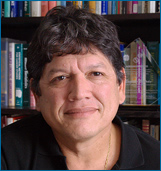
Peruvian Eugenio Beltran will never forget on his wedding day the surprise one of his wife′s relatives expressed upon learning he was a dentist who works at CDC.
"The public perception of a dentist is of someone working four days a week in his or her private practice," notes Beltran, who attended dental school in his native Peru before earning two masters and doctoral degrees from the University of Michigan. His wife Rachel is a medical epidemiologist in the Division of Healthcare Quality Promotion.The 15-year CDC veteran leads a team of seven scientists tasked with surveillance and research related to preventing oral diseases. He feels it is very important for dentists to be exposed to public health issues, especially since they often work as solo practitioners, work that isolates them from other health care professionals.
"Exposure to public health issues during dental training and in CE programs is quite important to keep a sense of a ′healthy′ reality," he explains. "The Division of Oral Health at CDC is probably the cornerstone office of the federal government where science, practice, and public health are linked together in formulating policies affecting the oral health of the nation. There is no better place to work."
Barbara Gooch, DMD, MPH, Dental Officer, Surveillance, Investigations and Research Team, Division of Oral Health, NCCDPHP
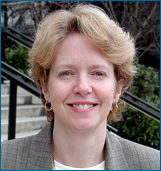
Many CDC employees may not know that smoking accounts for up to 50 percent of gum disease, and tobacco use, when combined with alcohol, accounts for up to 90 percent of mouth and throat cancers.
Raising awareness of those kinds of risk factors is part of Barbara Gooch’s mission. As a dental officer in CDC′s Division of Oral Health, she is part of a team that surveys oral diseases, conditions and risk factors and the effectiveness of prevention strategies. "We are focused on reducing the burden of oral disease that disproportionately affects some population groups, especially when classified by income, race-ethnicity, and age," adds Gooch, who earned her DMD at Harvard School of Dental Medicine and her MPH in Dental Public Health from the University of Minnesota School of Public Health.
While the division has historically focused on children and adolescents, it increasingly is promoting oral health across the lifespan. More older adults are retaining their natural teeth, but they also "have more new tooth decay than any other age group. Reasons for their increased risk include gingival (gum) recession that exposes softer root surfaces and medications that produce xerostomia (dry mouth)."
Jennifer Cleveland, DDS, MPH, Surveillance, Investigation and Research Branch, Division of Oral Health, NCCDPHP
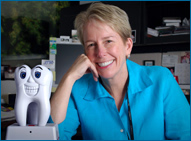
Jennifer Cleveland always wanted to work in public health dentistry. She found her niche 15 years ago when she came to CDC to conduct look-back studies of HIV-infected dentists, after a documented case of an infected Florida dentist spreading HIV to six former patients, none of whom had other appreciable risk factors for HIV infection.
The CDC dental officer and epidemiologist has continued to specialize on the safe delivery of dental care, including infection control. Today, her main responsibilities are to conduct epidemiological studies, translating research into policy using national guidelines. "It is very important for dentists to enter the field of public health dentistry and research. However, due to the escalating costs of education, it is becoming more difficult to attract dentists into these fields. To my knowledge there are fewer than 20 dentists working at CDC. I believe they could be more represented than they are," says Cleveland, who worked in private practice for eight years prior to coming to CDC.
R. Monina Klevens, DDS, MPH, (CAPT USPHS), Medical Epidemiologist, Healthcare Outcomes Branch, Division of Healthcare Quality Promotion, NCID
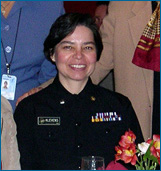
A passion for epidemiology drew Monina Klevens to CDC 15 years ago.
"CDC was THE place to work in epidemiology that was applied to the greatest causes of morbidity and mortality in the US." Klevens served as an EIS officer assigned to the Office on Smoking and Health from 1991 to 1993.
"The EIS training experience was critical in providing an environment for learning paired with opportunities to apply what you learn. You not only have a mentor, but you also have a group of people to help you learn," she explains.
Today, Klevens mentors an EIS officer in her job as principal investigator for surveillance of invasive methicillin-resistant Staphylococcus aureus within the Division of Healthcare Quality Promotion. She also coordinates studies of methicillin-resistant Staphylococcus aureus across the areas of surveillance, prevention, and epidemiology.
"Sooner or later, all people have contact with the healthcare system," says Klevens, who earned her DDS from SUNY Buffalo and her MPH from Harvard University.
"It′s stimulating and satisfying to work towards improving the quality of care. Preventing and controlling antimicrobial resistance is a part of that with enormous impact. I′m happy to have the opportunity to make even a small contribution in such a great challenge."
Get email updates
To receive email updates about this page, enter your email address:
Contact Us:
- Centers for Disease Control and Prevention
1600 Clifton Rd
Atlanta, GA 30333 - 800-CDC-INFO
(800-232-4636)
TTY: (888) 232-6348
24 Hours/Every Day - cdcinfo@cdc.gov

